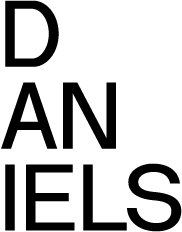MODULA on view to June 27 @ University of Toronto Art Centre
MODULA
DIGITAL EXPLORATIONS IN FORM, ORGANIZATION AND ORNAMENT
An exhibition of six recent computation projects from graduate students at the John H. Daniels Faculty of Architecture, Landscape, and Design, University of Toronto
June 13-27, 2009
UTAC - The University of Toronto Art Centre
15 King's College Circle, University College, University of Toronto
Hours: Tues- Fri 12-5pm; Sat 12-4pm
Antlia - Christian Joakim
Packing - Gavin Berman, Holly Jordan, David Long
Responsive Array - Nathaniel Addison, Jonathan Cummings, Safora Khoylou, Mani Mani
Inside Outside - Fei Liang
Paired Surfaces - Emily Lin, Scott Ling, Neu-Wa O’Neill
Hex - James Dixon, Peter Odegaard, Valerie Tam
Curated by Tom Bessai
Presented by the University of Toronto Art Centre
Exhibition Design and Production by Vjosana Shkurti, Mae Shaban, Meng Tang
Special thanks to the John H. Daniels Faculty of Architecture, Landscape, and Design, University of Toronto
MODULA is a sampling of the ongoing experimental digital design work being conducted by graduate level architecture students at the University of Toronto’s John H. Daniels Faculty of Architecture, Landscape, and Design. The six distinct projects exhibited in MODULA are iterative design explorations that extend current digital design practices of parametrics and simulation into real space through fabrication and construction.
The projects exhibited here are not finished works, nor are they strictly architectural in nature. Rather each project represents a conclusive moment within an ongoing collaborative research investigation amongst students, student teams and design faculty. The following objectives are common to the project work presented in MODULA:
>To theorize and experiment with computation techniques in the context of architectural design. Techniques include digital modeling, scripting, parametric modeling and time-based digital simulation
>To explore concepts and techniques for spatial subdivision and differentiation
>To investigate emergent properties and characteristics in computationally defined systems
>To create 2-dimnensional and 3-dimensional representations, diagrams and fabricated mock-ups of computationally generated design schema

